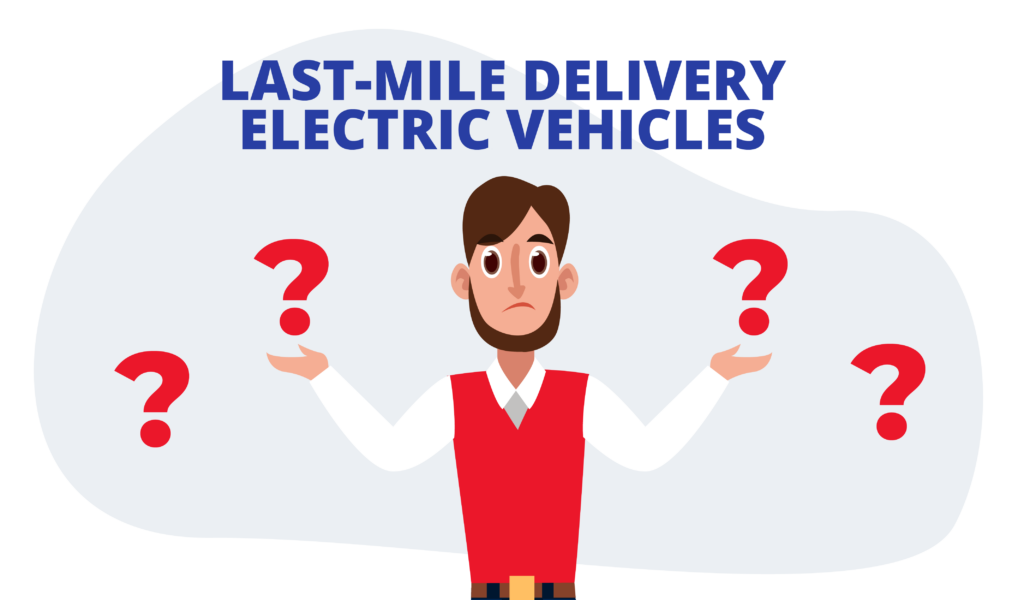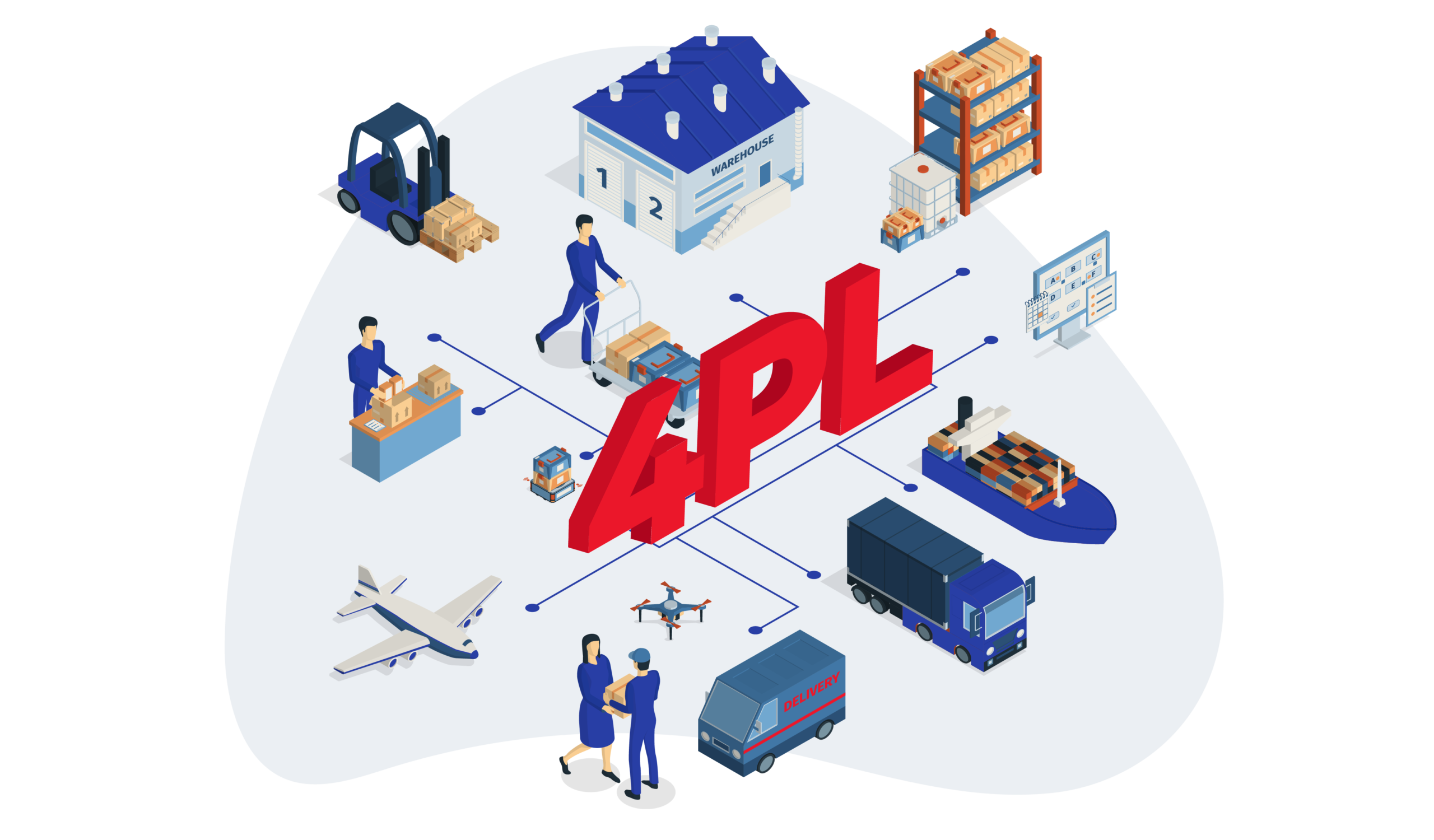Top 10 Electric Delivery Vehicles for Last-Mile Delivery in 2024

The landscape of last-mile delivery is undergoing a transformative shift, with electric vehicles (EVs) emerging as the future of urban logistics. In a world increasingly focused on sustainability, the transition to electric delivery vans is not just a choice but a necessity.
To future-proof your business, it’s imperative to understand how you can integrate EVs into your operations. To help you with that, this article explores the significance of adopting electric vehicles for last-mile delivery. It delves into the top 10 electric vehicles poised to dominate the market in 2024.
Electric Delivery Vehicles for Last-Mile Delivery: Is It Worth It?
The surge in eCommerce and the demand for rapid deliveries have thrust last-mile delivery into the spotlight as it constitutes the final and priciest phase of the transportation process.
This critical logistical aspect, accounting for 53% of total shipping costs, faces heightened pressure for sustainability. Studies reveal that an average company engaged in last-mile delivery deploys a minimum of 6 vans, emitting at least 1200 kg of carbon annually, contributing to 5% of the entire supply chain’s carbon footprint. Alarmingly, without interventions, a projected 32% spike in carbon emissions from urban delivery traffic is anticipated by 2030.
In response, a shift toward sustainable logistics, particularly the adoption of electric delivery trucks, becomes imperative. Electric vehicles (EVs) emerge as a verified eco-friendly alternative, presenting reduced emissions, lower operational costs, and a positive impact on urban air quality.
While EVs aren’t entirely emission-free, they markedly outperform fossil fuel vehicles in environmental impact. Current surveys forecast a robust 16% Compound Annual Growth Rate (CAGR) for the EV market in last-mile deliveries from 2023 to 2028. Notably, industry giant CEVA Logistics plans to expand its EV fleet to 1,450 by the close of 2025, underscoring a collective commitment to sustainable last-mile deliveries.

Electric Delivery Vehicles: Trends to Follow in 2024
The use of EVs for last-mile deliveries isn’t just about replacing your regular trucks with EVs. It requires an update on your supply chain management allowing you to maintain an efficient yet sustainable operation.
Here are some of the EV trends in logistics and delivery orchestration you need to watch out for this 2024:
Collaborations and Partnerships
Managing an EV fleet demands expertise, making collaborations with third-party logistics providers crucial for optimizing EV units. Expect increased partnerships between logistics companies, EV manufacturers, and charging infrastructure providers to craft comprehensive solutions for sustainable last-mile delivery operations.
Integration of Smart Technology
EVs in delivery fleets are set to integrate smart technologies, encompassing route optimization algorithms, real-time tracking, last-mile analytics, and telematics systems. These innovations enhance fleet management, ensuring heightened operational efficiency.
Government Incentives and Regulations
Globally, governments are likely to introduce or enhance incentives and regulations favoring EV adoption, ranging from financial incentives to tax credits and stricter emission standards for urban delivery fleets. These measures aim to facilitate businesses in implementing EV-focused delivery processes, considering the higher costs of EV last-mile delivery electric vehicles.
Innovation in Urban Mobility
Beyond last-mile EV trucks, companies are encouraged to explore innovative urban mobility solutions, such as micro-mobility options, drone deliveries, and electric cargo bikes. These alternatives address the specific challenges posed by congested urban areas, providing diversified delivery approaches.
Vehicle-to-Grid (V2G) Technology
Anticipate advancements in Vehicle-to-Grid (V2G) technology, enabling EVs to contribute excess energy back into the power grid. This bidirectional energy flow enhances overall grid stability and resilience, showcasing the evolving landscape of sustainable EV technologies.

Criteria for Selecting Electric Delivery Trucks
Selecting the right electric electric vehicles for last-mile delivery involves evaluating five key criteria:
Range
Assess the range of EV trucks considering the operational needs of last-mile delivery. Most 4×2 EV tractors, with an average weight of 30 tonnes, have a 300km range in one full charge cycle, and this range can even be increased depending on road conditions and handling.
Fortunately, more electric trucks are being produced today that could go up to 400km in one cycle.
While higher ranges may seem advantageous, they may incur higher maintenance costs and hefty price tags. Align the range with operational requirements for optimal cost efficiency.
Charging Infrastructure
With over 160,000 EV chargers in the USA as of 2023, widespread public charging stations exist, but sharing with electric car owners and other EV trucks can pose challenges. This is especially true considering that a full charge cycle can take as long as 8 hours.
Evaluate whether your EV truck provider offers dedicated charging ports for your fleet, potentially within your warehouses, to address last-mile delivery needs.
Payload Capacity
Consider the payload capacity of EV trucks, typically ranging from 2,000 to 6,000 lbs. Opt for a space-efficient design suitable for urban last-mile deliveries, where higher payload capacity may lead to reduced range. Balancing payload requirements with operational efficiency is crucial.
Cost of Ownership
Factor in the Total Cost of Ownership (TCO), encompassing upfront purchase costs, maintenance, and operational expenses over the vehicle’s lifecycle. While the average TCO of a regular light-duty truck is $8,000 per year, electric delivery trucks may have a higher initial TCO at $41,000, but research indicates a significant decline in TCO over the years compared to fuel-powered trucks.
Resilience and Adaptability
Ensure the adaptability of electric delivery trucks to diverse routes and operational conditions, covering both urban and suburban settings. Plan for seamless integration into existing fleets by considering maintenance procedures, driver training programs, and adjustments to operational workflows tailored to electric vehicles’ specifics.
The Best Electric Vehicle for Last-Mile Deliveries
Determining the best electric vehicle for last-mile delivery depends on specific business needs. However, the Opel Vivaro-e, Ford E-Transit, and Peugeot e-Expert stand out for their emission-free driving, versatile configurations, and advanced features.
It’s worth noting that logistics providers play a crucial role in guiding businesses through the transition, offering expertise in fleet management, insights into charging infrastructure, and facilitating collaborations with charging station providers to ensure a smooth shift to electric last-mile delivery.
So, if it’s your first time incorporating sustainability into your business through the use of electric delivery trucks, it’s best to consult experts first. Remember that your choice of last-mile delivery vehicle can make or break your business.

Top 10 Electric Delivery Vans for Last-Mile Delivery
Ready to implement a more sustainable last-mile delivery? Here are the top 10 EV brands you should consider:
1. Citroën ë-Jumpy Combi
The electric commercial vehicle offers four models, a range of over 400 km, and fast charging of up to 100 kW, making it a versatile and efficient choice for diverse business needs. Its Combi model, initially designed for transporting refrigerated goods, provides a range of 230 km and a payload capacity of 1,275 kg, catering to specific logistical requirements.
2. Ford E-Transit
With versatile configurations and a 68 kWh battery, the E-Transit provides a demonstrated range of 126 miles and features like Pro Power Onboard, ensuring adaptability and productivity for businesses. The standard SYNC 4 with a 12-inch screen enhances connectivity, voice recognition, and navigation, making it a tech-savvy solution for modern fleet management.
3. Mercedes eVito
An all-electric panel van with a range of up to 327 km, fast charging in 35 minutes, and a spacious, attractively designed interior, making it a compelling solution for comfort and efficiency in urban deliveries. The eVito’s load compartment capacity of 6.6m3, coupled with its efficient performance, addresses the dual needs of space and range for urban businesses.
4. Nissan e-NV200
A compact electric van with a 109hp electric motor, extended driving range, and versatile load space, suitable for urban businesses, promoting zero-emission transport. Despite being based on the 2009 NV200 van, the e-NV200 remains a popular choice, with a practical range of 187 miles for city driving and a compact design ideal for congested urban areas.
5. VNR Electric by Volvo Trucks
A Class 8 electromobility solution with an 85% improvement in range, covering up to 275 miles, faster charging, and support for electric fleet development, ensuring a powerful and reliable performance for various applications. Volvo Trucks’ comprehensive support, including guidance on charging infrastructure selection and financing assistance, adds value for businesses transitioning to electric fleets.
6. Opel Vivaro-e
An emission-free electric van with a range of up to 330 km, designed for seamless integration into optimized work processes and urban driving, offering businesses a premium and eco-conscious choice. The Vivaro-e’s advanced features, including regenerative braking and quick charging capabilities, contribute to enhanced efficiency, aligning with the evolving needs of sustainable urban logistics.
7. Peugeot e-Expert
Part of Peugeot’s total electrification strategy, offering a range of up to 350 km, efficient charging, and a redesigned interior with advanced features, providing professionals with enhanced safety and comfort. The E-Expert’s emphasis on driving aids, like regenerative braking and a heat pump, ensures not just range but a holistic approach to driver convenience and operational efficiency.
8. Goupil G2
The most compact electric utility vehicle in its category, known for its modern design, smooth driving, and payload capacity of up to 600 kg, provides an eco-friendly and practical solution for short trips. Goupil G2’s emphasis on ergonomics, with large openings and easy access, ensures user-friendly operation, making it suitable for diverse applications, including public space planning and building maintenance.
9. Alke
High-performance electric vehicles with a remarkable load capacity of up to 1,630 kg, suitable for intensive industrial use and challenging terrains, ensuring exceptional autonomy and versatility for diverse applications. Alke’s Electric Vehicles Cloud, offering real-time oversight and operational cost reduction, adds a layer of intelligent fleet management to their robust and high-capacity vehicles.
10. Nikola TRE BEV
A revamped cabover battery electric vehicle designed for short-haul metro-regional applications, featuring a maximum range of 330 miles and a quick charge time of 90 minutes at 350 kW, prioritizing sustainability and efficiency for modern logistics. The Nikola TRE BEV’s design, with advanced features like stability and efficient cooling, positions it as a technologically advanced solution for the demands of short-haul logistics, emphasizing both practicality and environmental consciousness.

Risks to Consider When Choosing Your Last-Mile Delivery Electric Vehicles
While the benefits of electric last-mile delivery are evident, certain risks must be acknowledged.
1. Charging Infrastructure Limitations
Electric vehicles (EVs) for last-mile delivery face challenges related to charging infrastructure. In some regions, the charging infrastructure may be insufficient or underdeveloped, impacting the feasibility and efficiency of electric delivery operations. This risk necessitates strategic planning to ensure adequate access to charging stations.
2. High Initial Costs
One significant risk involves the high initial costs associated with purchasing electric delivery vehicles. However, operational over time may offset these costs as numerous research suggest that the repair and maintenance costs of EVs are almost 50% cheaper than those of fuel-powered ones.
Despite this, businesses must carefully assess their budget constraints and weigh the long-term benefits against the substantial upfront investment required for EV adoption.
3. Potential Range Constraints
Range limitations pose a risk for electric delivery vehicles, especially in scenarios where extensive travel is required within a single charge. Businesses need to consider the specific operational requirements and select electric vehicles with an appropriate range to avoid disruptions or the need for frequent recharging, impacting overall productivity.
4. Evolving Landscape of EV Technology
The rapid evolution of electric vehicle technology introduces another risk. As advancements occur, businesses investing in electric delivery fleets may find themselves with outdated models sooner than anticipated. Staying informed about technological developments and planning for potential upgrades or replacements is essential to mitigate this risk.
5. Regulatory and Policy Changes
The regulatory environment around electric vehicles is subject to change, impacting the incentives, subsidies, or restrictions associated with EV adoption. Businesses should stay informed about government policies and regulations related to electric delivery vehicles, as shifts in the regulatory landscape can affect the overall cost-effectiveness and feasibility of EV implementation in the last-mile delivery sector.
Why Should Dropoff Become Your Trusted Last-Mile Delivery Partner
Partnering with a reliable service is paramount. Dropoff, a same-day delivery service for businesses and organizations alike, excels as the ideal partner for those seeking to embrace electric delivery solutions.
With their expertise spanning health, industrial, and other specialized industries, Dropoff brings unparalleled knowledge to help you maintain a sustainable supply chain. Their commitment to sustainability, cutting-edge technology, and a customer-centric approach sets them apart, making them the go-to choice for businesses aiming to enhance their last-mile delivery efficiency.
Final Thought
As the landscape of last-mile delivery continues to evolve, embracing electric vehicles becomes not just a trend but a necessity for businesses committed to sustainability and efficiency. With careful consideration of criteria, trends, and potential risks, coupled with the guidance of logistics experts, the transition to electric last-mile delivery can position businesses for long-term success in the ever-changing logistics landscape.
FAQs
Initially, electric delivery vehicles may have a higher upfront cost, but operational savings over time often offset the expense.
Businesses can ensure a smooth transition by collaborating with logistics experts, evaluating charging infrastructure, and training drivers for electric vehicle operations.
Government incentives may include financial support, tax credits, and stricter emission standards, promoting the adoption of electric vehicles in logistics.






